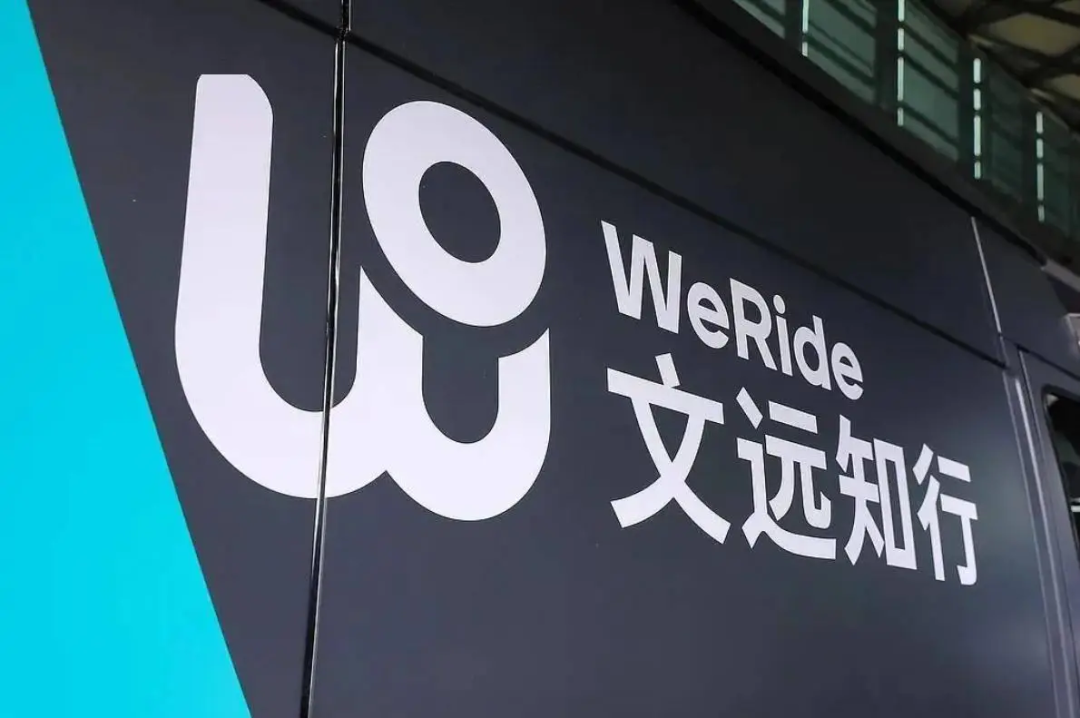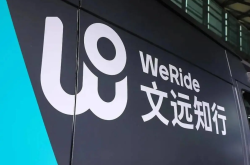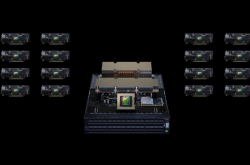Xiaoma and WeRide return to list in Hong Kong simultaneously, but Tiancheng Lou and Xu Han haven't won yet
![]() 11/07 2025
11/07 2025
![]() 561
561
Key Points:
1. Although WeRide and Pony.ai have successfully listed in Hong Kong, their business models remain unproven, with revenue relying on project orders rather than sustainable C-end services.
2. The true competitive barriers for Robotaxi are not technological leadership but policy access, cost control, and commercialization capabilities.
3. Facing rapid adoption by major players and L2++ intelligent driving, L4 players risk being marginalized if they cannot prove their unique value soon.
Editor: Key Point Editor
This autumn brings both chill and warmth to China’s autonomous driving sector.
The warmth comes from Pony.ai and WeRide, Guangzhou’s dynamic duo in intelligent driving, nearly simultaneously completing their Hong Kong IPOs. The former priced its shares at HK$22.8, while the latter at HK$27.1, creating a lively scene.
Despite the apparent success, a chill looms. Just days before the listings, WeRide’s CFO publicly questioned Pony.ai’s data integrity and inflated operational fleet numbers. Pony.ai swiftly responded, accusing the rival of emotional attacks and lacking business decorum.
The war of words escalated, with the Hong Kong Stock Exchange becoming the stage for this showdown over the title of the first Robotaxi stock.
Do these two L4 autonomous driving stars, backed by capital and armed with thousands of self-driving vehicles, truly hold the winning hand?
At least from a financial, business model, technological evolution, and competitive landscape perspective, the answer is no.
IPO: Not a Victory, but a Lifeline
First, let’s examine the financial reports.
WeRide reported revenue of RMB 127 million in Q2 2025, a 60.8% YoY increase, with its Robotaxi business contributing RMB 45.9 million, soaring by 836.7% YoY. Gross profit reached RMB 35.7 million, with a gross margin of 28%. Cash and equivalents plus financial assets totaled RMB 5.823 billion—impressive figures, especially amid widespread capital burn in the L4 sector.

But what about Pony.ai? While full IPO details remain undisclosed, its 2024 U.S. IPO filings and recent media reports reveal annual revenue of approximately RMB 310 million in 2024, with less than RMB 180 million in the first half of 2025. Gross margins are thin, and net losses continue to widen. Its Robotaxi fleet numbers around 800 vehicles, with fewer than half deployed in regular commercial operations. Critically, its cash reserves lag far behind WeRide’s, standing at just over RMB 2 billion by mid-2025, almost entirely from its latest funding round.
On the surface, WeRide appears stable, while Pony.ai teeters.
However, both are trapped in the same structural dilemma: revenue growth hinges on project deliveries, and profits rely on subsidies or custom client solutions. Genuine C-end Robotaxi services have yet to generate sustainable cash flow.
Contrast this with Baidu’s Apollo Go: by September 2025, Apollo Go had served over 8 million users across 10 cities, including Wuhan, Beijing, and Chongqing, with daily orders exceeding 100,000. Single-city operations are nearing break-even. While Baidu’s “L4-to-L2+” strategy draws criticism from some L4 purists, its closed-loop approach—scaling for data, optimizing models with data, and reducing costs through models—has gained traction and capital market favor.
The issue for WeRide and Pony.ai lies in their project-based, not platform-based, business models.
WeRide sells Robotaxi vehicles and operational services to Middle Eastern governments and Uber, while Pony.ai relies on orders from GAC and Toyota to sustain R&D. These B2G or B2B2C paths may seem prestigious but are fragile. Once orders slow, revenue plummets.
For Robotaxi to become a viable business, it must follow a high-frequency, low-cost, high-repurchase user operation logic. Regrettably, neither WeRide nor Pony.ai has proven such capability yet.
Technological Anxiety and Valuation Panic
The pre-IPO spat, though framed as CFO clashes, reflects deeper anxieties over who might fall behind first.
WeRide’s CFO accused Pony.ai of inflating its claimed fleet of 1,000 Robotaxis, asserting fewer than 100 were actually operational. Pony.ai retorted by questioning WeRide’s overseas data, alleging most vehicles in Abu Dhabi were for show. These disputes, while seemingly trivial, underscore a harsh reality: in capital markets, Robotaxi companies are valued by deployed vehicles × operational cities × policy support.

The problem is that deployment does not equal usability. Many automakers or local governments purchase autonomous vehicles for smart city showcases, parking them in parks, scenic spots, or fixed routes for public display. These vehicles do not accept external orders, log no mileage, or generate real data—yet they are counted as deployed fleets.
WeRide does have over 100 Robotaxis operating on Uber’s platform in Abu Dhabi, a genuine commercial breakthrough. Pony.ai offers public ride services in Guangzhou and Beijing, but daily orders are minimal, operational hours limited, and costs remain high.
Ironically, both companies emphasize technical metrics like pure vision L4, end-to-end large models, and autonomous intervention rates below 0.1 per 1,000 km—while avoiding a core question: are users willing to pay a premium for Robotaxi?
What Business Is Robotaxi, Really?
This question has sparked decade-long debate without resolution.
Some argue it’s a mobility service, requiring efficiency, pricing, and user experience comparable to Didi or Uber. Yet Robotaxi’s current cost structure (vehicle costs exceeding RMB 500,000, intensive maintenance labor, high insurance) cannot compete with human drivers.
Others view it as “smart hardware + software subscription,” akin to selling vehicles with OTA upgrades. However, L4 vehicles lack mass production scalability, and users refuse to pay separately for autonomous features—as evidenced by Tesla’s FSD subscription rate below 10%.
A third perspective frames Robotaxi as urban data infrastructure, fueling high-definition maps, vehicle-road coordination, and AI training. While grand, this vision struggles with monetization.
The true moat lies in commercial closure.
Currently, two players approach this threshold:
Baidu: Leverages Apollo Go and city partnerships to create a data-model-cost loop through its “L4-to-L2+” strategy.
WeRide: Achieves real orders and revenue via overseas commercialization (e.g., Abu Dhabi + Uber), albeit on a smaller scale but with a cleaner model.
Pony.ai occupies a middle ground, lacking Baidu’s resources and WeRide’s global execution. Its collaborations with Toyota and GAC remain technical validations, far from large-scale commercialization.

More dangerously, tech giants are launching downgrade attacks.
Huawei, Xiaomi, and NIO have announced mass production of L2++ end-to-end intelligent driving systems by 2026, offering user experiences nearing L4 levels at costs of just a few thousand yuan. Why wait for a Robotaxi when users can buy a nearly self-driving private car?
This implies that unless Robotaxi proves its unique value by 2026–2027, it risks being marginalized by L2+ technologies, becoming supplementary transport in specific zones (e.g., airports, parks, Middle Eastern new cities) rather than a mainstream mobility solution.
Technology Isn’t the Endpoint; Policy Is the Crux
Current L4 players’ technological routes are converging.
For perception, the shift is from lidar-camera fusion to pure vision + BEV + Occupancy networks. For decision-making, rule-based systems are giving way to end-to-end large models. For execution, partnerships with Bosch and NVIDIA yield high-computing-power domain controllers.
Yet technological gaps are narrowing. WeRide claims mass production of one-stage end-to-end SOP, while Pony.ai boasts a 5x improvement in closed-loop simulation efficiency. While significant, these advances do not constitute competitive barriers.
The true determinants lie in two dimensions:
1. Policy Access.
Globally, fewer than five cities permit fully driverless, commercial Robotaxi operations: Wuhan, Shenzhen, Abu Dhabi, San Francisco (Waymo), and Phoenix (Cruise, suspended).
Abu Dhabi stands out as the only non-U.S./China market allowing independent operations by foreign Robotaxi firms. WeRide’s partnership with Uber Autonomous and its 100+ vehicle operational permit there reflect not just commercial success but political clout.
In contrast, Pony.ai holds testing licenses in Beijing’s Yizhuang and Guangzhou’s Nansha, but commercial charge (paid operations) remain restricted, with local governments wary of data security and accident liability.
2. Cost Control.
An L4 Robotaxi currently costs RMB 500,000–800,000 (including lidar, computing platforms, and retrofitting). WeRide, through its Bosch partnership, reduced HPC3.0 platform costs by 30%. Pony.ai, reliant on Toyota’s supply chain, struggles with weak bargaining power due to limited production scale.
Unless WeRide and Pony.ai slash costs below RMB 350,000 within 18 months, they cannot compete on price with human drivers or L2+ private cars.
Tiancheng Lou and Xu Han: Neither Has Won Yet
Tiancheng Lou (Pony.ai CEO) and Xu Han (WeRide CEO) are technological idealists. Lou, a Google self-driving veteran, and Han, a Tsinghua Yao Class alumnus, were once hailed as China’s L4 dual stars.
But capital markets disregard sentiment.
WeRide appears ahead: successful Hong Kong IPO, ample cash, overseas deployment, and industry-leading gross margins. However, its 836.7% Robotaxi revenue growth, while impressive, builds on a mere RMB 5 million base—scaling from RMB 5 million to RMB 45 million is rapid but falls two orders of magnitude short of sustainable profitability.
Pony.ai faces greater risks: strong technology but sluggish commercialization, with its funding window closing. If it fails to demonstrate self-sufficiency by 2026, it risks severe challenges.
Uber explicitly views Robotaxi as a decade-long core strategy, intensively testing in Abu Dhabi and Los Angeles. Didi, while pausing L4 development, could integrate autonomous vehicles into its Latin American and Middle Eastern ride networks, creating a “platform + vehicle + user” trifecta.
Neither WeRide nor Pony.ai has built its own user entry point—a fatal flaw.
WeRide and Pony.ai’s Hong Kong listings mark the start of a new Robotaxi arms race.
Neither Tiancheng Lou nor Xu Han has won yet. They haven’t even proven that Robotaxi is a profitable business.
Of course, the world always needs idealists. At least they are on the road. Every kilometer traveled is a vote on whether autonomous driving deserves trust.
2025 marks the first year of large-scale Robotaxi deployment; 2026 may determine who survives.








